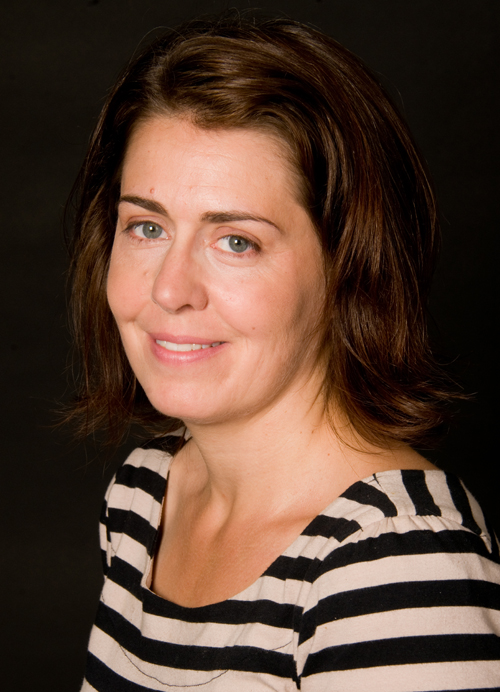
Advances in assisted reproductive technology (ART) give hope to those struggling with infertility, but some experts question the ethics of using “third-party” donors, particularly women who donate their eggs.
The ethics of the global trade in human egg donation was the subject of a recent talk on campus by Monique Deveaux, a philosophy professor and Canada Research Chair in Ethics and Global Social Change. As a political philosopher, she looks at the commodification of eggs and the exploitation of donors. “Does the trade in eggs wrongly commodify women’s reproductive capacity or – as some have charged – does it even commodify babies and does it entail exploitation of women?” she says.
Compared to sperm donation, egg donation is an invasive procedure that carries health risks. Women receive hormone injections for several days to stimulate the maturation of additional eggs in their ovaries. The donor is then sedated while a doctor uses a needle to extract the eggs, which are fertilized in a lab and implanted or frozen for future use. Freezing eggs and embryos also allows them to be transported anywhere in the world.
Not every implanted embryo results in a viable pregnancy, so recipients often request the implantation of more than one, which can result in multiple births. Due to the high health-care costs of multiple births, many countries prohibit more than one embryo from being implanted at a time. Some governments have made single-embryo transfer a requirement for national health insurance funding for in-vitro fertilization (IVF) cycles. The Government of Ontario, for example, has recently announced funding of IVF cycles using one embryo.
Egg harvesting was originally developed by the agricultural industry to breed livestock and was first used before the Second World War, says Deveaux. Human egg donation became available in the early 1980s.
Women may turn to an egg donor because they are unable to use their own eggs due to age, premature ovarian failure or illness. Certain types of cancer treatment and sexually transmitted infections can cause infertility. Some women may have had their ovaries damaged in an accident or had them surgically removed. Women may also choose to use donated eggs if they are at risk of passing on a genetic disorder to their babies.
In Canada, the Assisted Human Reproduction Act prohibits the sale and purchase of eggs, sperm or embryos, but the practice still continues because the laws are rarely enforced, says Deveaux. Those who engage in illegal reproductive services can face up to 10 years in jail and a $500,000 fine. “If you can imagine prosecuting someone who’s trying to start a family,” she says, “the optics of that doesn’t look good.”
It’s not uncommon for people to receive payment for surrogacy or for donating eggs or sperm, she adds, because Canadian laws remain “ambiguous” about reimbursement for donor expenses. The compensation paid to egg donors can vary greatly. Some American fertility clinics suggest that egg donors receive up to $10,000 per donation. “It’s all over the map in terms of what women are paid,” says Deveaux, “not just in the U.S. but all over the world.”
Critics argue that women living in poverty may be tempted to become egg donors to boost their income. “They’re made an offer they can’t refuse,” she says, because their other sources of income may be less lucrative. Egg donation is particularly popular in the former Soviet Union, where women face high unemployment rates, says Deveaux. For surrogacy, some women can earn up to six times their annual income.
Some European, Middle Eastern and South American countries ban egg donation, forcing would-be parents to travel to other countries for “reproductive tourism.” Deveaux refers to global laws as a “regulatory patchwork” in which some countries allow ART while others do not. Countries also differ in who is allowed to use reproductive services, particularly those that are publicly funded. Gay couples, for example, often use egg donors and surrogates, but some countries ban them from doing so.
Donor privacy also raises questions. Some countries prohibit anonymous egg and sperm donation in the belief that donor offspring should have the right to information about their genetic background, as do adoptees in many countries. Children may also wish to contact or meet their donors in the future.
Some couples prefer to meet their donors, while others choose their donors anonymously from a catalogue based on their preferred characteristics. Prospective parents can search through donor databases for the traits they want their baby to have. “People are highly irrational when it comes to this,” says Deveaux. “They think certain traits are heritable that are absolutely not heritable.”
One way to reduce commodification, she says, is to prohibit people from “shopping” for donors using characteristics other than skin, eye and hair colour. She also suggests that donors receive a flat fee for their time and expenses. “You’re paying for the reproductive labour,” she explains. “It’s a new kind of reproductive labour that women are engaged in.”